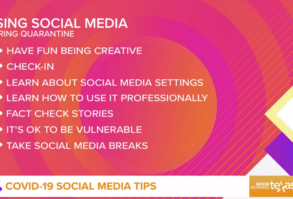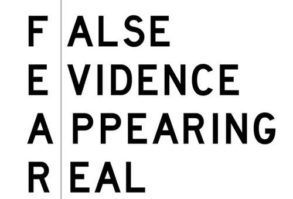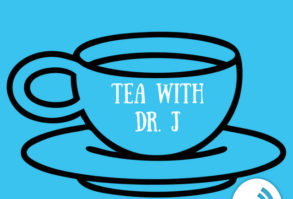For the past two years, I’ve been lucky enough to watch the State of the Union at the White House with a chosen few Americans who like me–LOVE social media and LOVE politics. We tweeted, we instagramed, we facebooked. We engaged our friends to take part in our experience. I had students and friends tell me they wouldn’t have watched the speech otherwise.
I can’t tell you how honored I’ve been to have had that opportunity two years in a row. As we look forward to President Obama’s LAST State of the Union on Tuesday night, it’s important to show how in the past 8 years the White House’s Office of Digital Strategy has engaged more citizens to take part and engage in this annual January tradition of the President addressing the nation.
What prompted me to write this blog post? Chief Digital Officer Jason Goldman’s article Meeting People Where They Are: How the White House Office of Digital Strategy is preparing the 2016 State of the Union Address
Goldman’s article shares with you the most innovative State of the Union Americans will see yet. Emerging media allows The White House to expand on President Obama’s speech in interactive ways that allow citizens to not only listen, but actively engage in the content. Tuesday’s night speech will not just be a speech–but will make those citizens who take part through the Internet to have an experience. The Office of Digital Strategy understands the multitask–mulitplatform– ways Americans consume media to gather messages. And that’s the point–how to engage citizens and deliver a message in ways citizens 1. understand 2. become more civic minded 3. and take action
—-
When I first attended the 2014 State of the Union Social, I started writing an article to capture the interactive approach the White House took to the annual ritual. I wanted to see how past Administrations engaged an audience and what may be transpiring as the White House became more digitally interactive during the State of the Union. Here’s a snippet of what I hope will emerge into a larger project–a book about political engagement in the age of Social Media. (remind me to send out that book proposal soon! So many ideas!)
President Obama’s Directive
The State of the Union has not always been this innovative. It started when President Obama, on May 23, 2012 issued a directive titled, “Digital Government: Building a 21st Century Platform to Better Serve the American People,” which stated,
It creates a space for citizens to become partners in building a better government, where “every man,” as Thomas Jefferson once wrote, “feels that he is a participator in the government of affairs.[1]” (The White House 2012)
The White House has evolved since that 2012 directive and has created an interactive, and accessible government that didn’t exist before President Obama took office. When digital citizens are allowed access to government easily, one can assume citizens may take more initiatives than they did before the Internet. Through social media and the White House’s Web site, the President’s messages can then become viral in hopes more people will watch and take part in such events as the State of the Union address. The goal of the White House is to create an accessible, dialogical interactive White House where people can take part in the conversation.
[1] “Digital Government: Building a 21st Century Platform to Better Serve the American People” WhiteHouse.gov, last modified May 23, 2012, http://www.whitehouse.gov/sites/default/files/omb/egov/digital-government/digital-government.html.
A Short History of Technology and the State of the Union
The United States of America’s Constitution states in article 2, section 3 that the President, “shall from time to time give to the Congress Information on the State of the Union, and recommend to their Consideration such measures as he shall judge necessary and expedient.” The one item the Constitution fails to mention is how this information is presented to Congress. In modern times the State of the Union address is carried out through a lot of pomp and ceremony where the President delivers his State of the Union address early in the year in front of Congress, usually in the evening. Typically, the audience listens and/or watches on television, radio, and most recently live streaming on the Internet. The State of the Union is a tradition that is not normally known to engage citizens—not until President Obama’s administration.
Today’s State of the Union Address is very different from what Americans were used to 224 years ago when George Washington delivered the first Annual Message to Congress. The Annual Message was given midday without much notice to inform Congress of the President’s plans. The message is typically a deliberative speech, which plans out future initiatives for the country.
George Washington gave the first Annual Message to Congress in 1790. Richard Teten explains Washington’s speech, “was little more than an update on the military situation of the day and was very brief.”[1] Thomas Jefferson decided to hand write his Annual Message to Congress. It is suspected Jefferson did not like public speaking and decided to let a clerk read his Annual Message.[2] Jefferson believed the Annual Message was like a king’s pronouncement and did not want to offend the American public.[3] Jefferson’s tradition lasted for almost 113 years until Woodrow Wilson, in 1913, decided to deliver his Annual Message to Congress in person.[4] This political tradition has been carried into modern times, and into the technological age. In 1923 President Calvin Coolidge was the first president to broadcast his State of the Union address on the radio.[5] The New York Times in 1923 reported,
Hundreds of stores dealing in radio apparatus caught the message and gave it out through loud speakers either inside their places of business or to knots of listeners on the sidewalk. So that downtown on every scattered business section of the various boroughs little groups of New Yorkers were drawn together to listen intently to the words of their President, not as embalmed text, but as living things while he was in the very act of speaking them. [6]
For the first time, technology brought together groups of citizens. Citizens gathered to listen, which means many people discussed the issues the President spoke about in his speech to their friends. In fact, The Washington Post reported,
Radio is preeminently the instrument of mass appeal. In time, the prophecy goes, it will unite the world into one vast brotherhood. It will duplicate the change brought about in civilization by the printing press, travel by steam and electricity. [7](“Tune In” 1924)
In 1924, the radio made citizens feel as if they knew the President of the United States personally, “We can stare at hundred faces in a crowd, but we know nothing of their owners until we have heard them speak.”[8] Technology was bringing an important aspect to the Annual Message—civic engagement.
Technology continued to create more civic engagement. In 1947, President Harry S. Truman was the first president to televise his State of the Union address in the afternoon. The Washington Post reported how citizens watched Truman’s address at the Statler Hotel:
Three television sets with 12 by 15 inch screens were located strategically about the bustling room. They enabled customers to sip their drinks, see and hear the President, and take life easy with all the aplomb of listening to an after dinner speaker.[9]
The television not only allowed people to hear the President’s voice, but they were able to see him deliver his speech. The level of civic engagement increased.
By 1965, President Lyndon B. Johnson decided to increase the size of his audience and deliver his State of the Union address during the evening known as prime time television. President Johnson wanted to engage not only Congress, but the citizens watching from home:
For his appearance last night, the President relied on the invisible prompting devise that he favors. But many times he looked directly at the camera rather than at the members of Congress. This personal touch emphasized that the State of the Union Address is not only a report to Congress but also to the people. [10]
The New York Times reported that by scheduling the speech during prime time—more people would be home from work watching with their children. The overall goal was to double and triple the size of the audience.[11] President Lyndon B. Johnson changed how Presidents delivered their speech. Television made Presidents realize that this was technology could bring politicians closer to their constituents. Just as President Franklin D. Roosevelt helped other Presidents realize the power of radio. Roosevelt’s fireside chats created a more informed and engaged electorate.
It was not until President Reagan who transformed the State of the Union into what it is today—an engaging experience for the people watching from home in their living rooms. President Reagan was the first, “ who signaled the new order in 1982 when he pointed to the gallery to honor Lenny Skutnik, the man who had dived into the icy Potomac to save a woman after a plane crash.”[12] Reagan not only addressed Congress, but also chose to create an emotional experience. Reagan set the precedence for the modern approach of delivering the State of the Union.
Today’s media landscape, a president has to compete with more than two types of media. Martin P. Wattenberg in “The Changing Presidential Media Environment” explains, “In some sense, the presidency is a less powerful position than it used to be as presidents have lost the ability to communicate their messages to a broad cross-section of the American public anytime they see fit.”[13] Wattenberg adds that people used to learn about a president’s message on television or the newspaper.[14] The Internet has brought television, print, and even radio into one place where especially young people may not be seeking out the specifics of the State of the Union Address.
—-
Today, the White House is creating a more dialogical interactive media atmosphere. I’ll let Mikhail Bakhtin explain why the White House’s interactive atmosphere is creating a deeper rhetorical dialogue with the American citizen.
Social Media and Dialogism
Bud Davis (2013) studied Twitter and its intertextuality and polyphonic structure. His article shows how “Twitter embodies an intertextual exchange of messages and opinions by which each tweet is connected with another, whether written in response to an event or another’s post” (18). When the White House created their Twitter account, their voices, and citizens merged into an exchange of messages that create a dialogical interaction that should benefit the political process. This dialogical interaction can be explained by Bakhtin’s term polyphony to explain the dialogue that was present in literary novels, but today we can show how Twitter has created this dialogical interactive world that the White House uses to interact and engage with citizens. Gary Saul Morson and Caryl Emerson explain in their book Mikhail Bakhtin: Creation of a Prosaics,
The polyphonic author, in short, necessarily plays two roles in the work: he creates a world in which many disparate points of view enter into dialogue, and, in quite distinct role, he himself participates in that dialogue. He is one of the interlocutors in the “great dialogue” that he himself has created” (239).
The White House is the polyphonic author when they create a dialogical interactive community through social media by creating hashtags, and other interactive measures. The White House is creating a world where different points of view enter into the dialogue and the White House itself participates in the conversation. Through Web sites like Twitter, “Every word in such a dialog speech is directed toward its object, but at the same time reacts intensely to the world of the other person, answering it and anticipating it” (Bakhtin 163). The White House and citizens’ s posts then become a dialogue, which both the White House and citizens anticipate each other’s responses. When U.S. Presidents gave their State of the Union speeches, citizens did not have the ability to share their public opinions in real time or create a dialogue with politicians, or even the White House. Davis explains, “Aides now more than ever must listen to how and what constituents are talking about. This should be a point to be celebrated in the political sphere because it contains the potential for widespread civic engagement and discourse” (21).
Since the White House developed a more social attitude by using social media tools outside the static Web site, the creation of a dialogical interactive world between the White House and citizens create a beneficial dialogical exchange that 20 years ago did not exist while watching the State of the Union. The White House creates this dialogical interactive space to engage citizens, even if they respond positively or negatively. Overall, The White House has created a dialogue to help understand public opinion because “The proper way to understand others is not ‘psychologically’ but dialogically” (Morson and Emerson 1990 267).
—
President Obama’s last State of the Union address on Tuesday night is definitely when you’ll see The White House’s Office of Digital Strategy at its finest. Engaging in conversation, Engaging in the media platforms, Engaging in creating an experience, Engaging to understand public opinion.
My advice to you as you listen to the speech–Think about what Presidential candidates are saying vs. what the speech is saying. What do you agree with? What don’t you agree with? What do YOU want to see in the next President? Next January a new administration takes over The White House. How do you want the future to look? I just hope innovativeness of the Digital Strategy Office keeps finding new ways to engage and inform citizens to continue this conversation.
[1] Richard Teten, “Evolution of the Modern Rhetorical Presidency: Presidential Presentation and Development of the State of the Union Address.” Presidential Studies Quarterly 33, no. 2 (June 2003): 337.
[2] Ibid.
[3] Ibid.
[4] Ibid.
[5] Ibid
[6] Special to The New York Times. “Article 1—No Title,” The New York Times, December, 7, 1923.
[7] “Tune in the First Radio President,” The Washington Post, June 1, 1924.
[8] Ibid
[9] “Article 2-no Title.,” The Washington Post, January, 7, 1947.
[10] Gould, Jack, “TV:Johnson Talk at Night Welcomed,” New York Times, January 5, 1965.
[11] Ibid
[12] Nunberg, Geoffrey, “Heeeer’s George!; The Speech That Turns Mere Presidents Into Talk Show Hosts,” New York Times, February 2, 2003.
[13] Wattenberg, Martin P, “The Changing Presidential Media Environment,” Presidential Studies Quarterly 34, no. 3 (September 2004): 571.
[14] Ibid.
[15] Diana Owen and Richard Davis, “Presidential Communication in the Internet Era,” Presidential Quarterly 38, no. 4 (December 2008): 659.
[16] Ibid, 665.
[17] Ibid
[18] Ibid, 666.



